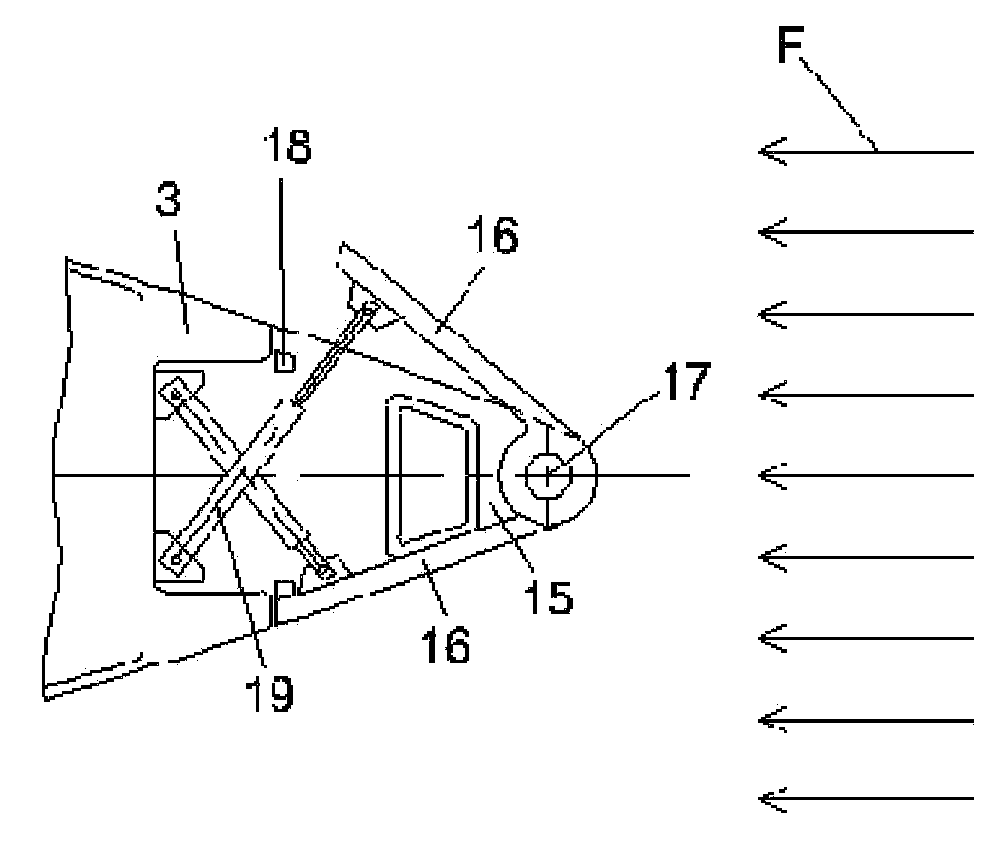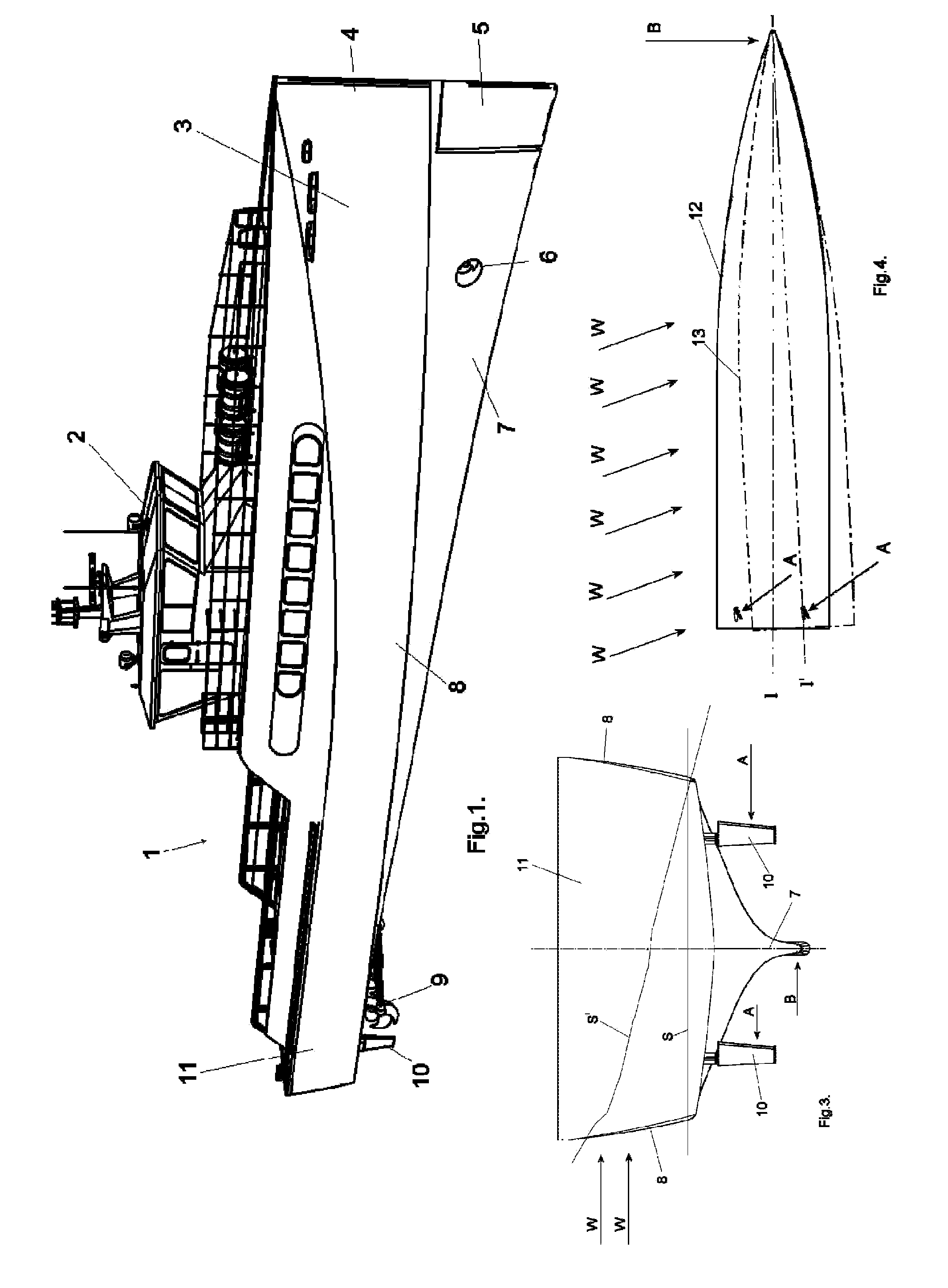Ship
a technology for ships and hulls, applied in the field of ships, can solve the problems of affecting and affecting the safety of sailing in relative large stern quartering or following waves, so as to reduce the length of ships, improve the behavior of ships in heavy seas, and reduce the wet surface and flow resistance
- Summary
- Abstract
- Description
- Claims
- Application Information
AI Technical Summary
Benefits of technology
Problems solved by technology
Method used
Image
Examples
second embodiment
[0036]FIGS. 6a and 6b show the bow 4 of the ship 1. Instead of a conventional rudder located in the bow 4 the lateral forces B for steering the ship 1 are now generated by the flow F along a side flap 16. On each side of the bow 4 there is a side flap 16, these side flaps 16 rotate around a more or less vertical axis 17, which axis 17 is supported at the lowest part of the bow 4 by a support 15. When not activated the side flaps 16 follow the contour of the foreship 3 and are positioned against a brace 18. For moving the side flaps 16 so that they can generate an adjustable lateral force B there is a mechanism 19. This mechanism 19 can be formed by two hinged levers connected to each other and respectively the foreship 3 and the side flap 16. The hinge connecting these levers can be moved in vertical direction by a hydraulic cylinder (not shown). This hydraulic cylinder can be located above the water level and is con-trolled such that either the one or the other side flap 16 is move...
third embodiment
[0037]FIGS. 7a and 7b show the bow 4 of ship 1. A submerged part of the bow 4 now consists of a rotor 20 that can rotate around a more or less vertical rotation axis 21. For driving the rotor 20 there is a drive 23 that drives the rotor 20 via a transmission 22. The drive 23 can be electric or hydraulic and can be located above the water level. During rotation the rotor 20 acts as a so called Magnus rotor and generates asymmetric pressure fields at the different sides of the bow 4 so that a lateral force B is the result. By changing the speed of rotation of the rotor 20 the magnitude of the lateral force B can be adjusted.
PUM
 Login to View More
Login to View More Abstract
Description
Claims
Application Information
 Login to View More
Login to View More - R&D
- Intellectual Property
- Life Sciences
- Materials
- Tech Scout
- Unparalleled Data Quality
- Higher Quality Content
- 60% Fewer Hallucinations
Browse by: Latest US Patents, China's latest patents, Technical Efficacy Thesaurus, Application Domain, Technology Topic, Popular Technical Reports.
© 2025 PatSnap. All rights reserved.Legal|Privacy policy|Modern Slavery Act Transparency Statement|Sitemap|About US| Contact US: help@patsnap.com



